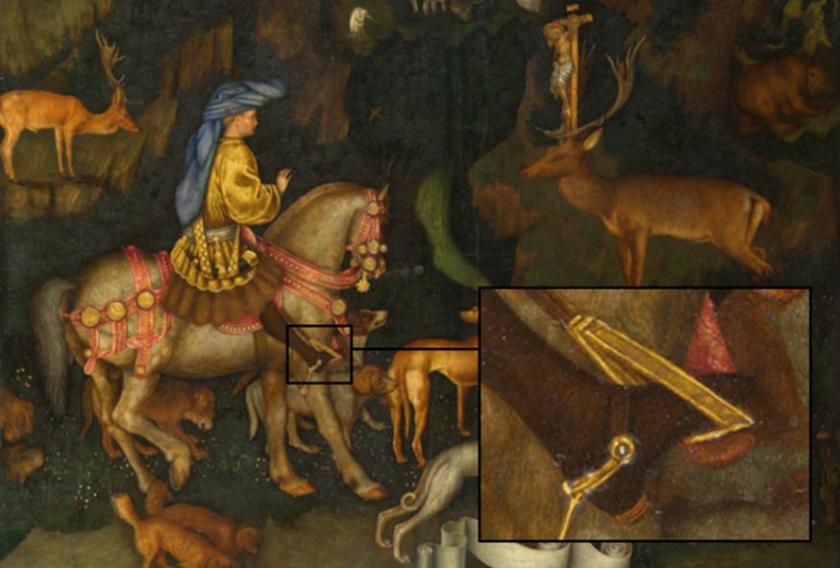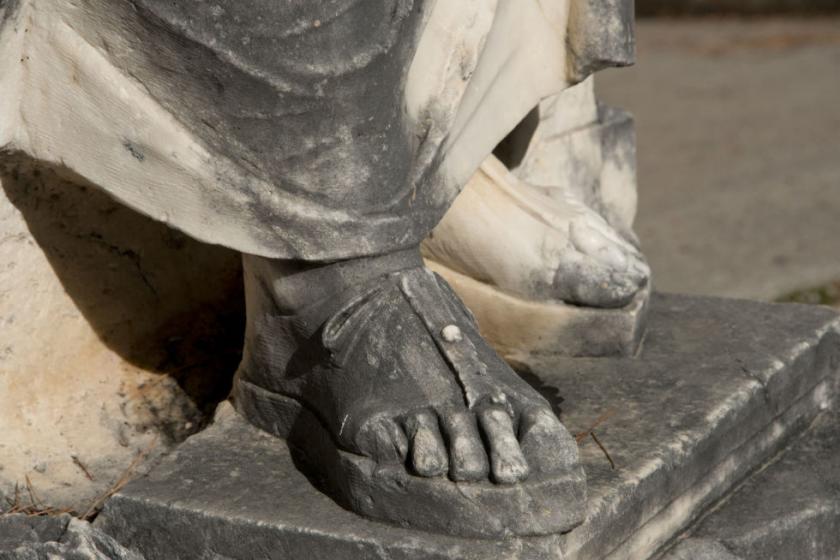High Heel shoes were used since 3500 BCE in Egypt and during later periods in Middle-East, India, Italy and Greece.
Infact, platform heels or high heels in those days solved more purpose than today.
Ancient Egyptian butchers wore high heels to keep their feet free from blood of butchered animals

Egyptian murals from 3500 BCE showed the lower classes walking around barefooted while those in higher classes wore early versions of high heels. Theirs were made of leather pieces held together with lacing in the shape of an Ankh (Crux Ansata or Cross with a handle, held by almost all Egyptian Gods) or the Egyptian hieroglyph for life.
Butchers were also allowed to wear these platform (high heel) shoes so they can walk above the blood of the dead animals they slaughtered.
Animals were slaughtered for sacrifice, meat consumption, leather usage etc by ancient egyptians.
Butchers footwear had complete elevation from ground, whereas higher class had footwear which were flat at only at toes.
Middle-East horse riders wore high heels to keep their feet in stirrups

As it was difficult to keep their feet in stirrups and stand up to shoot arrows at enemies, high heels were used, which were extremely helpful to horse riders, as the heel helped keep their feet in place as they ride. This was found on a 9th century bowl from Persia (modern Iran, Iraq).
Roman and Greek Theatre artists and Prostitutes wore High Heels

High heels greek and roman wore were more like platform shoes made with cork soles. Actors would wear high heels to depict the importance of their character. In the sex trade, on the other hand, high heels were used to identify prostitutes.
Today high heels are used for fashion, without any purpose.
Ramappa Temple has statues with Platform Heels since 1213 CE

Ramappa Temple also known as the Ramalingeswara temple, is located 77 km from Warangal, the ancient capital of the Kakatiya dynasty, 157 km from Hyderabad in the state of Telangana in south India.
Here Siva is worshipped as Lord Ramalingeswara. It stands majestically on a 6 feet high star shaped platform. The hall in front of the sanctum has numerous carved pillars that have been positioned to create an effect that combines light and space wonderfully.Temple is known by the name of the sculptor Ramappa, who built it over a period of 40 years.
This temple has carvings of females called ‘Madanika‘, who are also called ‘Salabhanjika‘. She is shown wearing platform heels.

Once can observe that there are actually platform footwear, where same level of height is maintained from toes till heels.

Ancient India had original platform heels, which were called Paaduka, with high rise to walk freely on any surface.
Later, The Kabkab from Lebanon, The Okobo from Japan, The Chopine from Europe were modified versions of these platform heels.
All these solved the basic purpose of walking with feet staying free of dirt on surface.
First high heels worn for fashion were made because of a petite queen of France, Catherine de Medici (1519-1589 CE).
Her fiance, the Duke of Orleans (later the King of France), was rather tall. The duke was also known to have a beautiful mistress. In order to compete with the King’s elegant French mistress, Catherine had two-inch heels made to give her a more captivating physique. These high heels later became a fashion staple associated with wealth and privilege.

